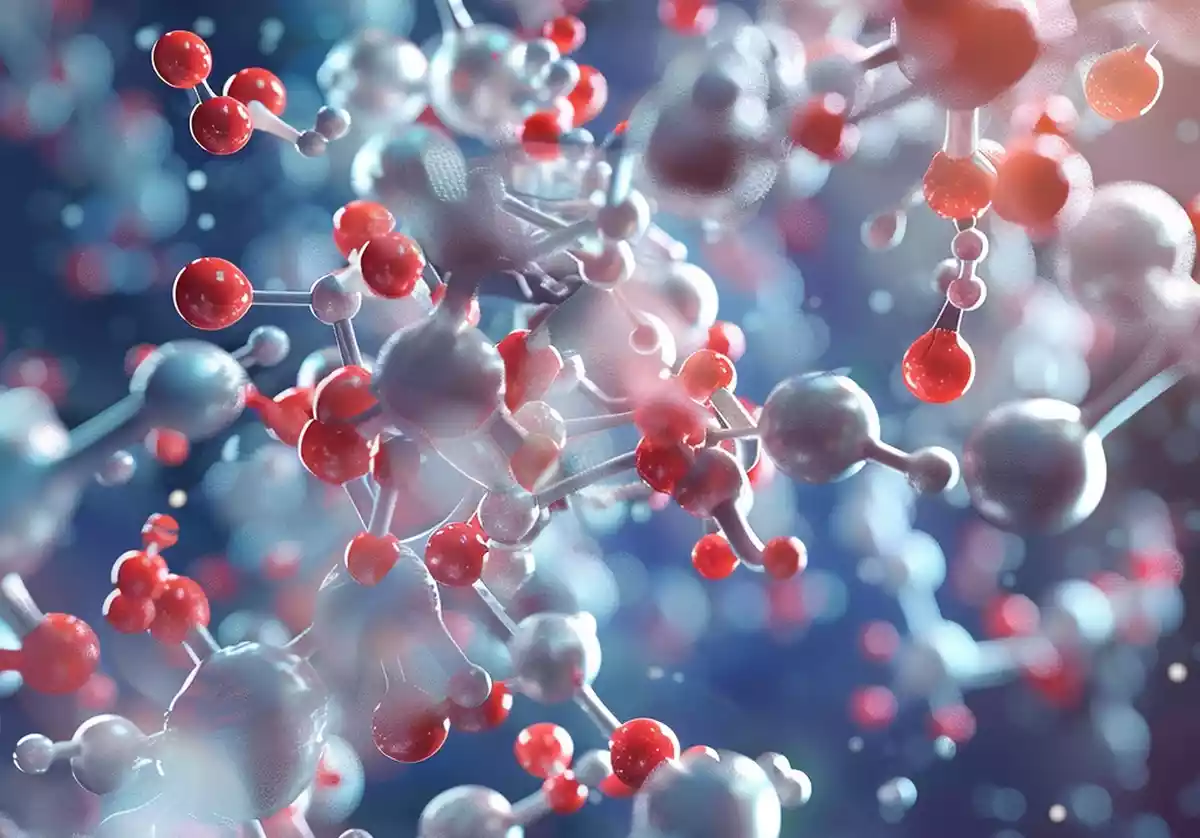Generic Name: C1-inhibitor
Brand Names: Various around the world
What is C1-inhibitor;
C1-inhibitor (C1-INH) is a protein found in the blood that helps regulate several inflammatory pathways in the body. C1-inhibitor side effects will be extensively analyzed later in this article. Some well-known brand names of drugs containing this protein include Berinert, Cinryze, Haegarda, and Ruconest. C1-inhibitor was first discovered in the 1960s during research on hereditary angioedema (HAE), a rare genetic disorder characterized by recurrent swelling episodes. Subsequent studies revealed its crucial role in modulating the complement system, contact activation system, and coagulation cascade. This article will delve into findings from key research papers, such as “Biological activities of C1 inhibitor” by Davis et al. and “C1 inhibitor: more than a serine protease inhibitor” by Zeerleder, to provide a comprehensive understanding of this important protein.
The Chemical Composition and Action Mechanism
The glycoprotein C1-inhibitor (C1-INH) has a molecular weight of 105 kDa and 478 amino acids. It is mostly synthesised in hepatocytes and is a member of the serpin protease inhibitor family. In terms of structure, C1-INH is made up of an active position on the carboxy-term end of the molecule and a flexible joint region. The primary method by which C1-INH inhibits the activity of target proteases, including C1r, C1s, MASP-1, and MASP-2, is by forming stable clusters with them. Many inflammatory pathways, such as the coagulation cataract, the contact system, and the complementary system, are regulated by this process (Davis et al., “Biological activities of C1 inhibitor”).
Applications
Hereditary angioedema (HAE), a rare genetic condition characterised by recurrent bouts of edoema in the skin, mucosal membranes, and internal organs, is the primary indication for the use of C1 inhibitors. Deficit or dysfunction of C1-INH results in uncontrollably activating the inflammatory pathways, which is the cause of HAE. Exogenous C1-INH therapy aids in the prevention or mitigation of edoema episodes as well as the restoration of normal protein levels. Because of its immunostimulating and anti-inflammatory qualities, C1-INH has also been studied as a potential treatment for inflammatory and autoimmune diseases, including rheumatoid arthritis, acute respiratory distress syndrome (ARDS), and sepsis, in addition to HAE. (“C1-inhibitor: more than a serine protease inhibitor”), Zeerleder. To validate C1-INH’s efficacy and safety in these indications, more clinical research is necessary.
C1-inhibitor Side Effects
C1-inhibitor Common Side Effects
The C1-inhibitor frequently causes injection-site responses, such as discomfort, redness, swelling, and itching. Usually minor, these responses disappear on their own. Fatigue, headaches, dizziness, and nausea are some typical adverse effects. After receiving C1-INH, individuals can develop fever, urticaria, or rash.
C1-inhibitor Rare but Possible Side Effects
Anaphylaxis and other rare but potentially fatal allergic responses are among the C1-inhibitor’s negative effects. Breathing difficulties, facial, lip, or tongue swelling, and tachycardia are signs of anaphylaxis. Thromboembolism, immune system problems, and infections are other uncommon adverse effects, particularly in people with compromised immune systems.
C1-inhibitor Serious Side Effects
Although they are uncommon, serious allergic responses including anaphylaxis and thromboembolic events like deep vein thrombosis or pulmonary embolism can be caused by the C1-inhibitor. There is an urgent need for medical attention due to these adverse effects. Furthermore, despite stringent safety precautions during manufacture, there have been sporadic instances of infectious agent, such as viruses, being transmitted by C1-INH plasma derivatives (Zeerleder, “C1-inhibitor: more than a serine protease inhibitor”).
Warnings
Patients who have a history of known hypersensitivity to either of the excipients or the active ingredient should not use C1-inhibitor. Patients having a history of autoimmune illnesses or allergic responses should use it with caution. Individuals who are on anticoagulant medication or have blood clotting abnormalities may be more vulnerable to hemorrhagic complications and need to be properly watched. Since C1-INH’s safety and effectiveness during pregnancy and lactation are not entirely established, it should only be taken when the possible advantages outweigh the risks. Before beginning C1-INH therapy, patients should disclose to their doctor any current medical problems or drugs (Davis et al.).
Precautions
When giving C1 inhibitors to certain patient groups, care must be taken. People who have experienced allergic responses or autoimmune diseases in the past need to be cautiously watched for any potential adverse effects. Furthermore, patients using anticoagulants or having blood coagulation problems may be more vulnerable to hemorrhagic consequences, hence a thorough benefit-risk evaluation is necessary prior to medication delivery (Davis et al.). Since there is little information on the safety of C1-INH during pregnancy and lactation, its use should be carefully examined and should only be pursued when the potential advantages outweigh the risks. Although the danger is regarded as extremely low because of stringent control and disinfection processes during the manufacturing of C1-INH, health practitioners should be aware of the possible risk of infectious agent transmission through plasma derivatives (Zeerleder).
Contraindications
Patients who have a history of known hypersensitivity to the drug’s active ingredient or any of its excipients should not use C1-inhibitor. Those who have experienced severe or potentially fatal allergic responses to immunoglobulin or plasma proteins should not take it. Furthermore, because C1-INH may raise the risk of thrombosis even further, it should not be given to individuals who have known thrombophobic episodes or active thromboembolic illnesses. As there is minimal safety evidence available in these groups, the use of C1-INH in patients with severe cardiac or renal failure should be carefully examined, and only if the projected benefits clearly outweigh the possible dangers. (The “Biological activities of C1 inhibitor” by Davis et al.
Interactions
Certain medications may interact with C1-inhibitor, compromising their safety or efficacy. The risk of bleeding may rise if blood-clotting medications, such as anticoagulants, antiplatelet agents, or non-steroidal anti-inflammatory drugs (NSAIDs), are used concurrently. Consequently, it is important to use caution and thorough medical supervision while combining them with C1-INH (Davis et al.). Furthermore, because of its immunomodulatory qualities, C1-INH may potentially impede the effectiveness of vaccinations, particularly those that include attenuated live viruses. It is advised to postpone starting C1-INH medication for at least two weeks following vaccination, or to avoid immunisation with live, weakened viruses while receiving C1-INH treatment.
Overdose
Overdoses with C1 inhibitors are uncommon and often do not result in major side effects. On the other hand, administering C1-INH in overly high dosages may raise the risk of thromboembolic events, particularly in individuals who already have risk factors. (Zeerleder). Patients who overdose should have the proper supportive treatment and be continuously watched for thrombosis symptoms and indications. In extreme circumstances, it could be required to stop the C1-INH treatment and start thrombosis prevention measures such anticoagulant administration. Since there isn’t a single antidote for C1-INH overdose, dosage should be tailored to the patient’s clinical condition and toxicity symptoms.
Briefly
C1-inhibitor is a protein that regulates various inflammatory pathways in the body. Hereditary angioedema (HAE), a rare genetic illness characterised by recurrent bouts of edoema, is the primary condition for which it is utilised. Through the inhibition of target protease activity, C1-INH regulates the coagulation cascade, the contact system, and the complementary system. Injection site responses, nausea, headaches, and dizziness are common side effects. Rare but serious side effects include allergic reactions and thrombophobic episodes. Patients with a history of allergies, autoimmune diseases, or coagulation issues should take C1-INH cautiously. It is also not recommended in situations where there is known hypersensitivity to any of its constituent parts. It may increase the risk of bleeding when used with NSAIDs, anticoagulants, or antiplatelet medicines. Although C1-INH overdoses are uncommon, they can raise the risk of thrombosis. For this medication to be used safely and effectively, close collaboration between the chemist and doctor is required.
ATTENTION: It is of vital importance to never take any medication without the supervision and guidance of a specialised doctor. Consult the package insert of each prescribed medicinal product, as each pharmaceutical company accurately describes the specific specifications for the product, which may undergo regular updates. Note that the trade names mentioned in this article correspond to well-known medicinal products that contain the active substances under analysis. However, there may be variations depending on the composition of each drug. This article focuses on the active substance analysis rather than the drug’s trade name. The reference to trade names is made exclusively for the convenience of readers, who should carefully study the instruction leaflet for each commercial preparation they use. It is necessary to have close cooperation with your attending physician and your pharmacist. The self-administration of any medication carries serious health risks and should be strictly avoided.
Bibliography
- Davis III, A. E., Mejia, P., & Lu, F. (2008). Biological activities of C1 inhibitor. Molecular Immunology, 45(16), 4057-4063. sciencedirect
- Davis III, A. E., Lu, F., & Mejia, P. (2010). C1 inhibitor, a multi-functional serine protease inhibitor. Thrombosis and Haemostasis, 104(11), 886-893. thieme-connect
- Zeerleder, S. (2011). C1-inhibitor: more than a serine protease inhibitor. Seminars in Thrombosis and Hemostasis, 37(04), 362-374. thieme-connect



